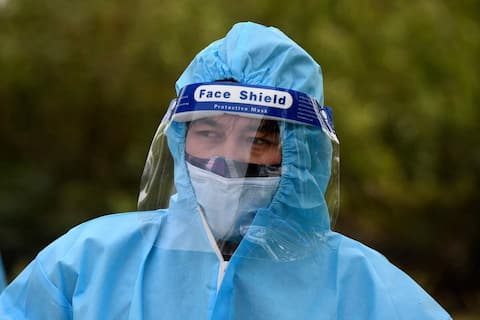Spotted in at least 17 countries, the Indian variant of the coronavirus is worrying because of the spectacular deterioration of the health situation in India, but specialists insist on the fact that it is far from being the only responsible.
• Read also: COVID-19: first case of Indian variant detected in France
• Read also: Any country can find itself in India’s situation
• Read also: India: over 200,000 dead from COVID-19, Delhi hospitals overwhelmed
Designated by the name of its line (B.1.617), it was placed Tuesday by the WHO in the list of “variants of interest”, those whose potentially problematic genetic characteristics justify surveillance.
This is the category that comes just after that of “worrying variants”, currently three in number (English, South African and Brazilian).
Like these three, its genetic characteristics raise concerns that it is more contagious.
The first observations show that it has “a higher growth rate than the other variants circulating in India, which suggests a greater transmissibility”, explains the WHO in a point dated Tuesday.
“This remains to be proven epidemiologically,” however, notes the Scientific Council, which guides the French government, in an opinion published on Monday.
The assessment of the contagiousness of variants is in fact based on epidemiological data: researchers observe how quickly they spread and deduce from this to what extent they are more contagious.
From this point of view, the situation in India feeds fears. The country declared a new world record of 385,000 new infections and nearly 3,500 deaths in the past 24 hours on Friday morning, and images of its crematoriums submerged by bodies have traveled the world.
But beyond the intrinsic characteristics of the variant, “other drivers” can explain the explosion which is hitting India, underlines the WHO, by pointing to “large population groups” where barrier gestures are not well respected. .
“Exaggerated”
“India is coming out of an election period with very many gatherings that are not prohibited. Overall, the level of preventive measures taken appears to be very low. For very strong cultural reasons including religious traditions, crowd baths in the Ganges during certain festivals have so far been preserved, ”adds the French Scientific Council.
“Further investigations are necessary to understand the relative share of each of these factors”, argues the WHO, recalling that other variants are circulating in India, foremost among which is the English variant.
Moreover, in addition to the question of its contagiousness, specialists fear that the Indian variant will lead to a decrease in the effectiveness of vaccines, in the same way as the South African and Brazilian variants.
We have very little data at the moment. A preliminary study made public on April 23 concludes that the Covaxin vaccine (from the Indian laboratory Bharat Biotech) is less effective against this variant than against the historic virus in terms of antibody production, but that it still offers protection .
Faced with these unknowns, many specialists warn against too anxiety-provoking presentations of the Indian variant.
“For the moment, I tend to think that the treatment of the media is exaggerated”, estimated the virologist Christian Drosten, who advises the German government, Tuesday in a podcast of the radio NDR Info.
The fears related to the Indian variant come from the fact that it contains “two mutations already known but not associated so far”, called L452R and E484Q, according to the French Scientific Council.
The “combination” of these two mutations has sometimes earned the variant “the inappropriate name of + double mutant +” in the media, continues the instance.
On the European continent, France has just spotted its first cases, after the United Kingdom, Germany, Belgium, Switzerland, Greece or Italy.
